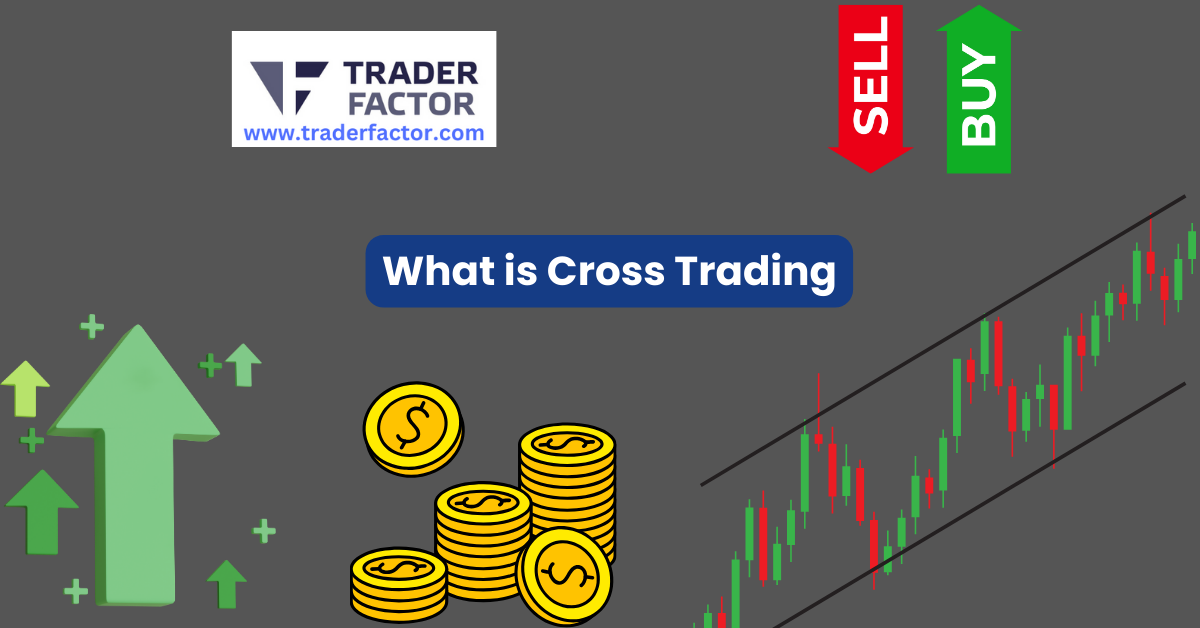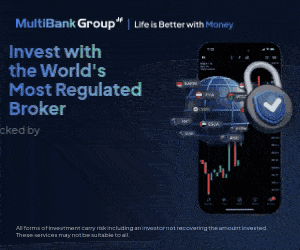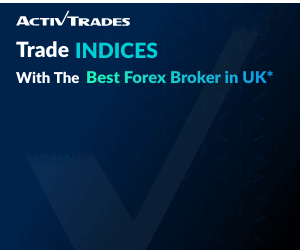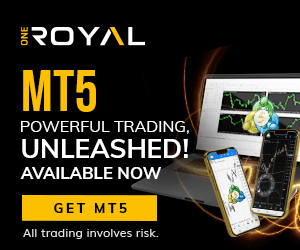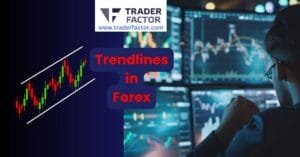Are cross trades legal? Cross trading is a sophisticated trading strategy that involves the simultaneous buying and selling of related financial securities in different stock exchanges. Because of certain stipulations, many exchanges do not permit cross trading due to local regulations. Hence, this is an activity that is not allowed on most major exchanges.
Cross orders also occur legitimately when a broker matches buy and sell orders for the same security across different client accounts. It allows traders to take advantage of price discrepancies and arbitrage opportunities and diversify their portfolios. However, it also comes with its own set of risks and challenges that need to be carefully managed.
In this article, we will delve into the intricacies of cross trading, explore various strategies, discuss risk management protocols, highlight the benefits and risks associated with it, analyze prevailing market price trends, and touch upon regulatory compliance.

Table of Contents
ToggleCross Trading Strategies
Cross trading means a practice where a buy and sell order for the same asset is offset without recording the trade on the stock exchange itself. The strategies involve the simultaneous buying and selling of related securities or a client’s assets, aiming to capitalize on price differentials or stock exchange inefficiencies.
Market participants employ various techniques such as pair selection, hedging, and arbitrage to identify and exploit opportunities in different markets. These strategies offer potential for profit and can be adapted to different timeframes and market conditions.
Pair Selection Techniques
Matching orders is a crucial step in cross trading, as it determines which securities to trade and capitalize on potential price divergences or convergences. Traders employ various techniques to identify suitable pairs:
- Statistical analysis: Traders utilize statistical tools and techniques to analyze historical data and identify patterns or relationships between securities. They may use statistical measures such as correlation coefficients, regression analysis, and standard deviation to assess the degree of relationship between pairs.
- Correlation studies: Traders perform correlation studies to measure the strength and direction of the relationship between pairs of securities. Positive correlations suggest that the prices of the two securities move in tandem, while negative correlations indicate an inverse relationship. By identifying highly correlated or negatively correlated pairs, traders can exploit potential price divergences.
- Fundamental analysis: Market participants conduct fundamental analysis to evaluate the underlying value and financial health of securities. This analysis involves assessing factors such as earnings growth, revenue trends, industry dynamics, and macroeconomic indicators. By comparing the fundamental characteristics of different securities, you can identify pairs with potential price discrepancies.
Hedging Strategies
Hedging is a risk management technique employed on cross trade orders to protect against adverse price movements by use of derivatives on cross trade orders. Here are some common strategies used in cross trading:
- Long-short positions: A broker executes long positions on securities they believe will have a better price above the bid price and short positions on securities they expect will decrease in value. This strategy allows them to profit from both upward and downward price movements while minimizing market risk.
- Options: Traders use options contracts to hedge their positions. For example, they may purchase put options to protect against potential downside risk or call options to hedge against potential upside risk. Options provide traders with the right, but not the obligation, to buy or sell securities at predetermined prices within a specified period.
- Futures: Traders utilize futures contracts to hedge their positions. By entering into futures contracts, traders can lock in future prices for the underlying securities, reducing the risk of price fluctuations. Futures contracts are standardized agreements that require the buyer to purchase or sell the underlying asset at a specific price and date.
- Swaps: Traders enter into swaps to mitigate risks associated with interest rate or currency fluctuations. For example, currency swaps allow traders to exchange two currencies at a predetermined rate, protecting against potential exchange rate volatility.
Hedging strategies help you manage risk exposure in cross trading, providing a level of protection against adverse market conditions.

Arbitrage Opportunities
Arbitrage is a strategy employed by cross traders to profit from price discrepancies between related securities in different stock exchanges. Here’s how it works:
- Spatial arbitrage: Traders identify differences in the prevailing market price for the same security across different markets. They buy the security in the market where it is undervalued and simultaneously sell it in the market where it is overvalued. This strategy exploits the inefficiencies in pricing across markets, allowing traders to generate profits without taking on market risk.
- Temporal arbitrage: Traders take advantage of price differences between the same security at different points in time. They buy the security when it is priced low and sell it when the price increases. This strategy relies on timing the market and exploiting temporary price imbalances.
Diversification Approach
Diversification is a core principle in cross trading, helping you spread risk across different assets, sectors, and geographical regions. Here’s how traders employ diversification techniques:
- Asset class diversification: Traders invest in a variety of asset classes, such as equities, bonds, commodities, and currencies. This diversification reduces the impact of any single asset class’s performance on the overall portfolio.
- Sector diversification: Traders allocate their investments across different sectors to minimize the impact of sector-specific risks. By investing in sectors with varying sensitivities to economic conditions, market players can mitigate the risk of concentrated exposure to a single industry.
- Geographical diversification: Traders invest in securities from different geographical regions to reduce the impact of localized market movements. By diversifying across countries and regions, you can benefit from global economic growth and reduce country-specific risks.

Timeframe Analysis
Timeframe analysis is a key aspect of cross trading strategies, as different timeframes offer distinct opportunities. Traders employ the following approaches:
- Short-term trading: Traders focus on exploiting price discrepancies within a short timeframe, such as minutes or hours. They closely monitor intraday price movements, technical indicators, and market news to identify short-term trading opportunities. Short-term cross trading strategies require quick execution and a high level of agility.
- Medium-term trading: Traders analyze price trends and patterns over several days or weeks to identify potential trading opportunities. They consider technical indicators, market sentiment, and fundamental factors to make medium-term trading decisions. Medium-term cross trading strategies require a longer holding period and may involve capturing broader market trends.
- Long-term investing: Traders adopt a long-term perspective, focusing on fundamental analysis and the underlying value of securities. They invest in pairs with a long-term growth potential and hold positions for months or even years. Long-term cross trading strategies aim to capitalize on sustained price movements and the overall performance of the securities.
Traders adapt their strategies to different timeframes based on their trading goals, risk tolerance, and market conditions.

Risk Management Protocols
Effective risk management is crucial in cross trading to mitigate potential losses and protect capital. You implement risk management protocols such as position sizing, stop-loss orders, and stress testing to control your risk exposure.
By carefully managing risk, traders can minimize the impact of adverse market movements and maintain long-term sustainability in cross trading. Traders implement various risk management protocols to control their risk exposure:
- Position sizing: Traders carefully determine the size of their positions relative to their overall portfolio to manage risk. They allocate a specific percentage of their capital to each trade, considering factors such as the volatility of the securities, their risk tolerance, and the potential impact on the portfolio.
- Stop-loss orders: Traders set stop-loss orders to automatically exit trades if the current market price reaches a specific predetermined level. Such trades help limit potential losses by enforcing disciplined risk management and preventing significant drawdowns.
- Risk assessment and monitoring: You continuously assess and monitor the risk levels of their trades and portfolios. They utilize risk assessment techniques such as value-at-risk (VaR) analysis, which measures the potential loss of a portfolio within a specific confidence interval. By regularly monitoring risk levels, you can make informed decisions and adjust their strategies as needed.
- Stress testing strategies: Traders conduct stress tests to assess the resilience of their trading strategies and portfolios under extreme market conditions. These tests involve simulating scenarios with heightened volatility, sharp price movements, or unexpected events to evaluate the impact on the portfolio’s performance.
Quantitative Modeling
Cross trading often involves the use of quantitative models to analyze market data and optimize trading strategies. Traders leverage mathematical and statistical techniques to develop quantitative models that assist in decision-making. Some common quantitative modeling approaches in cross trading include:
- Statistical modeling: Traders use statistical models to identify patterns, trends, and relationships in historical market data. They apply statistical methods such as regression analysis, time series analysis, and machine learning algorithms to forecast future price movements and generate trading signals.
- Algorithmic trading: Traders employ algorithmic trading strategies that utilize computer algorithms to execute trades based on predefined rules and parameters. These algorithms can analyze vast amounts of data, identify trading opportunities in real-time, and execute trades with speed and precision.
- Risk modeling: Traders develop risk models to quantify and manage various types of risk, including market risk, credit risk, and liquidity risk. These models help traders assess the potential impact of different risk factors on their portfolios and implement appropriate risk management strategies.
Quantitative modeling enhances decision-making in cross trading by providing objective analysis, reducing emotional biases, and optimizing trading strategies based on data-driven insights.

News and event analysis
Traders closely monitor market news and events that may impact the securities they are trading. News and event analysis play a crucial role in cross trading strategies:
- Economic indicators: Traders track key economic indicators such as GDP growth, inflation rates, employment figures, and interest rate decisions. These indicators provide insights into the overall health of the economy and can influence the performance of securities.
- Corporate announcements: Traders pay attention to corporate announcements such as earnings reports, mergers and acquisitions, product launches, and management changes. These announcements can have a significant impact on trading highly volatile securities involved and present trading opportunities.
- Geopolitical developments: Traders consider geopolitical events such as political elections, trade disputes, and international conflicts. These developments can introduce volatility and affect the performance of securities, providing cross trading opportunities.

Leverage and Position Sizing
Leverage allows traders to amplify their trading positions and potentially increase returns. However, it also magnifies the risk of potential losses. Traders apply leverage and position sizing techniques to manage risk effectively:
- Leverage: Traders utilize leverage by borrowing funds to increase their market exposure. They can enter larger positions than their available capital would allow. Leverage ratios determine the amount of capital required to open a trade. Traders must use leverage responsibly and consider their risk tolerance before increasing their market exposure.
- Position sizing: Traders determine the appropriate size of their positions based on their risk tolerance, available capital, and the specific characteristics of the securities being traded. Position sizing helps traders control risk by allocating an appropriate percentage of their capital to each trade.
Adapting to Regulatory Changes
Cross trading is subject to regulatory oversight, and traders must stay updated on changes in regulations and compliance requirements. Regulatory authorities implement rules and guidelines to ensure fair and transparent markets and protect investors. Traders must adapt their strategies and operations to comply with these regulations. Here are some key considerations:
- Compliance adherence: Traders must understand and adhere to the regulations governing cross trading in their respective jurisdictions. They need to maintain proper documentation, report trades accurately, and fulfill any disclosure requirements. It is essential to stay informed about updates and changes in regulations to ensure compliance.
- Know-your-customer (KYC) requirements: Traders are obligated to verify the identities of their clients and assess their suitability for cross trading activities. KYC procedures involve collecting and verifying client information, conducting risk assessments, and implementing measures to prevent money laundering or financial crimes.
- Reporting and transparency: Traders may be required to report their cross trading activities to regulatory authorities. This includes providing details on trade volumes, counterparties, pricing, and other relevant information. Transparency in reporting helps regulators monitor market activities and detect any potential misconduct or market manipulation.
- Market surveillance: Regulatory authorities employ market surveillance tools and systems to monitor trading activities and detect any irregularities or suspicious behavior. Traders must cooperate with regulators and provide requested information when necessary.
- International regulations: Traders engaging in cross trading across different jurisdictions need to navigate the complexities of international regulations. They must be aware of the regulations in each jurisdiction involved and ensure compliance with multiple regulatory frameworks.

Risk Management in Cross Trading
Effective risk management is imperative in cross trading to safeguard investments and minimize potential losses. Here are some key risk management considerations:
Position Sizing
Determining the appropriate position size ensures that the risk exposure is proportional to the trader’s risk tolerance and overall portfolio size. Traders should carefully assess the potential impact of a trade on their portfolio before entering into it.
Stop-loss Orders
Stop-loss orders are pre-set instructions to automatically sell a security when it reaches a certain price level. Traders use stop-loss orders to limit their losses and protect against adverse market movements.
Diversification
Diversifying across different asset classes, sectors, and geographical regions helps spread risk and reduce the impact of localized market movements. By having a diversified portfolio, traders can cushion potential losses in one area with gains in another.
Monitoring market correlations
Understanding and monitoring the correlations between different securities is crucial in cross trading. Traders need to be aware of how changes in one asset may impact related assets to manage their risk exposure effectively.
Risk-reward Ratio
Assessing the risk-reward ratio of each trade helps traders make informed decisions. By comparing fair market price and the potential rewards to the associated risks, traders can determine whether a trade is worth pursuing.
Stay Informed About Market News
Keeping up-to-date with market news and developments allows traders to anticipate potential risks and adjust their strategies accordingly. By staying informed, traders can react swiftly to market changes and protect their investments.
Using Hedging Instruments
Hedging instruments such as options, futures, and swaps can be used to offset potential losses in cross trading. These instruments provide traders with an additional layer of protection against adverse market movements.

Stress Testing Strategies
Traders should rigorously test their trading strategies under various market scenarios to identify potential weaknesses and vulnerabilities. Stress testing helps uncover any flaws in the trading approach and allows for proactive adjustments.
Continuous Education
Cross trading is a dynamic field, and traders must continuously educate themselves to stay ahead of the curve. By keeping up with industry trends, attending seminars, participating in webinars, and reading research papers, traders can enhance their knowledge and refine their trading strategies.
Adherence to Regulatory Compliance
Compliance with regulatory requirements is of utmost importance in cross trading. Traders must adhere to rules and regulations set by governing bodies to ensure ethical conduct and maintain the integrity of the market. Regular audits, reporting, and internal controls help ensure compliance and mitigate legal risks.

Benefits of Cross Trading
Cross trading offers several benefits for traders and investors. Let’s explore some of the advantages:
Enhanced Portfolio Diversification
By trading in multiple markets and asset classes, cross trading allows for enhanced portfolio diversification. This diversification helps reduce risk by spreading investments across different securities and markets, thus potentially improving overall portfolio performance.
Cost Efficiency
Cross trading can be cost-efficient compared to traditional trading strategies. By leveraging price discrepancies between currency pairs and arbitrage opportunities, traders can generate profits without incurring substantial costs.
Capital Optimization
Cross trading enables traders to optimize their capital by utilizing leverage and margin. By borrowing funds or trading on margin, traders can increase their exposure to potential profits while maintaining a smaller capital base.
Arbitrage Opportunities
One of the primary advantages of cross trading is the ability to take advantage of arbitrage opportunities. Price discrepancies between related securities in different markets create opportunities for traders to buy low and sell high, thereby generating profits.
Risk Mitigation
Through effective risk management techniques, cross trading allows for better risk mitigation. Diversification, position sizing, and hedging strategies help protect against potential losses and preserve capital.
Flexibility in Trading Strategies
Cross trading provides traders with the flexibility to employ a wide range of trading strategies. Whether it’s short-term scalping, long-term investing, or event-driven trading, the versatility of cross trading allows traders to adapt their strategies to different market conditions.
Access to Global Markets
Cross trading provides access to global markets, enabling traders to capitalize on opportunities beyond their local markets. This global exposure allows for diversification across different regions and economies.
Efficient Capital Allocation
By carefully selecting trading opportunities and managing risk, cross trading allows for efficient capital allocation. Traders can allocate their capital to the most promising trades to maximize potential returns.
Liquidity Management
Cross trading enables effective liquidity management by allowing traders to balance their positions across different markets. This flexibility ensures that traders can enter and exit positions smoothly without impacting market liquidity.
Strategic Advantage
Cross trading provides a strategic advantage by allowing traders to leverage their knowledge and expertise in multiple markets. This advantage can lead to better decision-making, improved performance, and increased profitability.

Risks Associated with Cross Trading
While cross trading offers numerous benefits, it also comes with inherent risks. Traders must be aware of these risks and employ appropriate risk management strategies. Let’s discuss some of the common risks associated with cross trade:
Market Price Discrepancies
Market price discrepancies are the foundation of cross trade, but they can also pose risks. Prices may not always converge as expected, leading to potential losses if trades are executed based on inaccurate assumptions.
Execution Risks
Executing cross trades across different markets and platforms may introduce execution risks. Delays, slippage, and order routing issues can impact trade execution and profitability.
Currency Exchange Risks
Cross currency pair trade often involves trading in different currencies, exposing traders to currency exchange risks. Fluctuations in exchange rates can significantly impact trade profitability. Trading cross currency pairs can produce more opportunities for market participants when added to their range of trading instruments.
Regulatory Compliance
Cross trading is subject to regulatory oversight, and failure to comply with regulations can lead to legal implications and financial penalties. Traders must stay informed about regulatory requirements and ensure compliance at all times.
Liquidity Risks
Trading in less liquid markets or during periods of low liquidity can pose challenges. Traders may face difficulties in buying or selling securities at desired prices, potentially impacting trade execution and profitability.
Counterparty Risks
Cross trading involves interacting with multiple counterparties, including brokers, exchanges, and clearinghouses. Counterparty risks such as defaults or financial instability can impact trade settlements and overall portfolio performance.
Technology and Connectivity Issues
Reliance on technology and internet connectivity introduces the risk of technical glitches, system failures, or cyber-attacks. These issues can disrupt trade execution and expose traders to potential losses.
Information Asymmetry
Information asymmetry between different markets can create challenges in cross trade. From proper reporting traders must carefully analyze and interpret market information to make informed trading decisions.
Geopolitical Events
Geopolitical events, such as political instability, trade disputes, or economic crises, can have a significant impact on cross trading. Sudden changes in global economic conditions can disrupt market dynamics and increase volatility.
Operational Challenges
Cross trading involves managing multiple trades across different markets simultaneously. This can introduce operational challenges, including trade reconciliation, data management, and settlement procedures.

Market Trends in Cross Trade
As of January 24, 2024, several market trends are shaping the landscape of cross trading. These trends reflect the evolving nature of the industry and present new opportunities and challenges for you. Some prominent trends include:
Digitalization of Cross Trading Platforms
Cross trading platforms are increasingly embracing digitalization to streamline processes, enhance efficiency, and improve user experiences. Automation, algorithmic trading, and advanced analytics are being integrated into platforms to facilitate seamless cross trade operations.
Growing Interest in Cryptocurrency Cross Trading
With the rise of cryptocurrencies, there is a growing interest in cross trading digital assets. Traders are exploring opportunities to trade cryptocurrencies across different exchanges and take advantage of price discrepancies and arbitrage opportunities in this emerging market.
Cross-Border Trading Integration
Efforts are being made to improve cross-border trading integration, particularly in regions with substantial trading activity across multiple markets and regulatory frameworks. Initiatives such as harmonizing trading rules, establishing cross-border trading networks, and promoting collaboration among regulators aim to facilitate smoother cross trading activities.
Environmental, Social, and Governance (ESG) Considerations
ESG factors are gaining prominence in cross trading as investors seek to align their investments with sustainability and responsible practices. Traders are incorporating ESG criteria into their decision-making processes, considering the impact of environmental, social, and governance factors on the performance of securities.
Rise of Algorithmic Cross Trading
Algorithmic trading algorithms are becoming increasingly prevalent in cross trade. These algorithms use complex mathematical models and historical data to identify trading opportunities, execute trades automatically, and manage risk. The rise of algorithmic cross trading has led to increased efficiency and improved execution speeds.
Innovations in Risk Management for Cross Trading
Risk management in cross trading is evolving with the introduction of innovative techniques and technologies. Machine learning, artificial intelligence, and big data analytics are being employed to enhance risk assessment, identify patterns, and optimize risk mitigation strategies.
Expansion of Cross Trading in Emerging Markets
Cross trading is expanding its reach into emerging markets, offering opportunities to tap into the growth potential of these economies. Traders are exploring cross trading possibilities in regions such as Asia, Latin America, and Africa, where markets are developing rapidly.
Cross Trading Regulations and Compliance
Regulatory authorities are increasingly focusing on cross trading activities to ensure market integrity and investor protection. Stricter regulations, reporting requirements, and compliance standards are being implemented to address the risks associated with cross trading and maintain market stability.
Integration of Artificial Intelligence (AI)
The integration of AI technology in cross trading is revolutionizing the industry. AI-powered algorithms and machine learning models are being used to analyze vast amounts of data, identify patterns, and generate trading signals, thereby improving decision-making and enhancing trading strategies.
Cross Trading in Niche Markets
Traders are exploring cross trading opportunities in niche markets that offer specialized assets or unique trading conditions. These niche markets can provide diversification benefits and present untapped profit potential for you willing to navigate your specific dynamics.

Frequently Asked Questions (FAQs)
1. What does cross trading in forex mean?
Cross trading in forex involves the execution of trades involving the by the same asset manager and substantial trading activity, where two separate client accounts trade the same asset at the same price.
2. Are cross trades permitted in the forex market?
Yes, cross trades are permitted under specific conditions and proper regulatory classification, ensuring that such cross trades are legally executed and promptly reported.
3. How are cross trades conducted in forex?
Cross trades in forex occur when a portfolio manager matches buy and sell orders for the same asset at the same price or fair market price, effectively transferring assets between different client accounts.
4. Can derivatives trade hedges be involved in cross trading?
Yes, cross trade may involve derivatives trade hedges to manage risk exposure and achieve better pricing, particularly in volatile markets.
5. What are the inherent pitfalls of cross trading in forex?
Inherent pitfalls of cross trading include the potential for negative reputation and legal consequences if not executed in a timely manner and in compliance with local regulations and regulatory classifications.
6. How does cross trading impact transaction costs?
Cross trade can lead to lower transaction costs as it eliminates the need for intermediaries, such as brokers, resulting in cost savings for the asset manager.
7. Can exotic currency pairs be involved in cross trading?
Yes, cross trading can involve exotic currency pairs, allowing asset managers to execute trades cross currency pairs at a specific price point without the involvement of other market participants.
8. What currencies are commonly involved in cross trading?
Commonly involved currencies in cross trading include the US dollar, Japanese yen, British pound, and Swiss franc, reflecting global forex market dynamics.
9. How are cross trading transactions reported?
Cross trading transactions must be reported properly to comply with regulatory requirements, ensuring transparency and adherence to legal guidelines.
10. What distinguishes cross trade from regular forex trading?
Cross trade entails the same asset manager executing trades within two separate accounts at the same price, distinguishing it from traditional forex trades involving external or other market participants make.

Conclusion
Cross trade definition is complex and a dynamic trading strategy that offers opportunities for enhanced portfolio diversification, cost efficiency, and access to global markets. However, it also entails various risks and challenges that need to be managed effectively through risk management protocols and adherence to regulatory compliance.
As the stock market trends continue to evolve, you need to stay informed, adapt to technological advancements, and incorporate innovative risk management techniques to navigate the ever-changing landscape of cross trading successfully. By doing so, you can harness the benefits of cross trading while mitigating potential risks and capitalizing on emerging opportunities.

